Money Market Update
enough funding alarm bells have chimed, with the Fed set to announce or initiate its next plumbing put. the enigma, however, is deciding when to unleash its next "bazooka" — sometime before year-end
Welcome to another Money Market Update. In case you missed it, we have moved our short-term commentary from X to the Substack chat for a smoother experience and more thoughtful dialogues. We’re looking forward to sharing views, ideas, and esoteric plumbing knowledge while reducing our peeve about the lengthy (but necessary) gaps between publishing:
As recent events and heightened news flow around QT have accelerated our schedule, we’re publishing a more pressing update before the next long-form article. Onto the latest ever-expanding money market update…
Summary & Brief Commentary
What a difference a one or two weeks makes to sentiment. The majority of The Street is now calling for various interventions as if another repo crisis were only weeks or days away. But is ending QT (i.e. the Fed’s balance sheet reduction a.k.a “taper” a.k.a “runoff”) at the October FOMC a little too hasty? Conks estimates that the Fed’s “alarm system” is flashing amber but approaching red. It’s time to pull the plug. The question is when. SOFR is trading above IORB, yet interbank rates (EFFR) remain relatively subdued. Funding tensions, however, are rising enough for the Fed to consider ending a short but sweet “excess collateral” regime and initiating the next “excess cash” era, kicked off by ending its balance sheet reduction (i.e runoff).
But beforehand, the Fed must conclude an epic years-long liquidity drain without fireworks, and both the Fed and dollar market makers face their biggest challenge yet. As mentioned earlier, the overlap between the Fed and Treasury’s goals will misalign at October month-end. The Treasury needs funding and will continue to drain reserves via the TGA (the U.S. government’s bank account). Meanwhile, the Fed desires abundant interbank liquidity, which depends on fewer reserves being “neutralized” in the TGA. With market makers pulling back as excess reserves reach their lowest level, October month-end will likely be the peak in funding pressure. November will experience less stress, given that the TGA will by then shrink and cash, i.e., bank reserves, will flow back into banks.
Pair a shaky but relatively calmer November while gaining an extra month of testing (likely more uptake) at its SRF (standing repo facility), and ditching more duration and MBS in the process, the Fed has a cogent case for preserving its balance sheet runoff (QT) until the December FOMC. If Conks were a U.S. central bank official, we’d announce the end of QT at the October FOMC meeting but pause actual runoff just before year-end to coincide with the December FOMC meeting. What's more, ending QT is just the first stage of the Fed’s “landing” — a term coined in The Fed’s Reckoning to describe officials bringing money market rates back into balance. Conks also expects the Fed to start injecting reserves via buying bills in preparation for year-end.
Post-December FOMC, regardless of a QT ending, will remain volatile. Ceasing balance sheet runoff will stabilize rates, yet pressures will soon re-emerge. The great dealer (balance sheet) sheet congestion, demand for leverage, and the Treasury’s funding needs will keep rising, exerting greater pressure on money market rates. Fed bill purchases, a.k.a TOMOs (temporary open market operations), or more specifically, RMOs (reserve management operations), will thus presumably follow a QT “cessation”. RMOs — Conks’ preferred “alphabet soup” acronym — are likely to arrive before year-end to provide (some) “comfort reserves” to market participants.
The Fed is more likely to execute RMOs (not QE) instead of “cutting” i.e. lowering one of its administered rates, either IORB (interest paid on banks’ reserve balances) or SRFR: the cheapest rate the Fed offers on secured cash loans (i.e. repos) via the SRF. Lowering these rates should ease pressure on money market rates by attracting dealers to tap more Fed liquidity and banks to deploy more reserves into repo. But as other “STIR influencers” have noted, lowering SRFR below the upper limit of the Fed’s target range may tarnish the Fed's credibility. Likewise, as discussed in The Fed’s Reckoning, IORB cuts don’t address the funding pressures at hand, and monetary leaders usually avoid implementing IORB cuts until o/n FF (the overnight Fed Funds rate, a.k.a. EFFR) drifts much higher toward what banks earn on reserves.
A more out-of-consensus solution involves the Fed offering “term repos” (a repo with the Fed that unwinds, with cash and collateral returning to the borrower, after more than one day). “Fed term repos” will allow dealers to lock in funding via the SRF over balance sheet-intensive periods, such as when dealer banks pull back to window-dress, on month-ends and year-ends. This is the ideal “fix” for the coming stormy year-end.
Spreads (such as SOFR-FF) are likely to come down on any QT end-date announcement, but then, at some pace depending on the Fed’s response, will continue to widen into year-end. In our view, only a full-blown pivot (described below) in October would likely contain money market spreads and initiate the next excess cash era right off the bat.
Excess collateral regimes have proven to be short and spicy, as noted earlier. Thus, it’s highly probable that the Fed is soon set to end its liquidity drain. How many mini-bazookas will it choose to fire in the aftermath? For now, Conks thinks solely RMOs — i.e. bill purchases and reinvesting MBS into bills. Going forward, many of these additional post-QT-era tools will require much more discussion in future articles, and we unveiled them now due to a sudden consensus to — at the very least — terminate the Fed’s balance sheet taper. We hope to delve into the mechanics in more depth in upcoming articles (and the Conks chat) “in the coming months” (a Powell-approved statement). Stay tuned…
WIP: STIR monitor/Treasury monitor to accompany these updates
And with that, onto the chartbook…
If you act on anything provided in this newsletter, you agree to the terms in this disclaimer. Everything in this newsletter is for educational and entertainment purposes only and NOT investment advice. Nothing in this newsletter is an offer to sell or to buy any security. The author is not responsible for any financial loss you may incur by acting on any information provided in this newsletter. Before making any investment decisions, talk to a financial advisor.
EFFR, OBFR, SOFR, TGCR, and BGCR are subject to the Terms of Use posted at newyorkfed.org. The New York Fed is not responsible for publication of tri-party data from the Bank of New York Mellon (BNYM) or GCF Repo/Delivery-versus-Payment (DVP) repo data via DTCC Solutions LLC (“Solutions”), an affiliate of The Depository Trust & Clearing Corporation, & OFR, does not sanction or endorse any particular republication, and has no liability for your use.




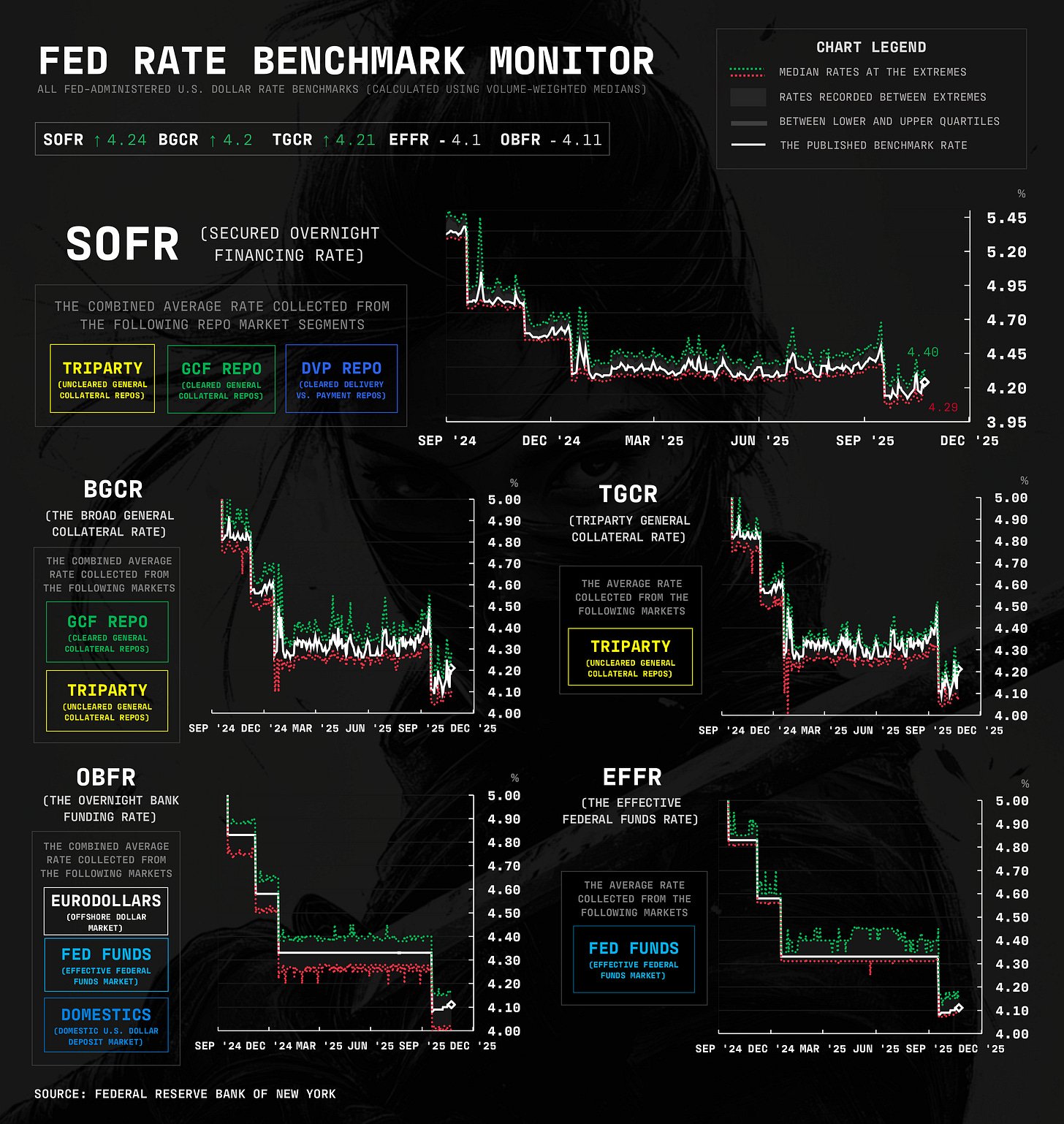
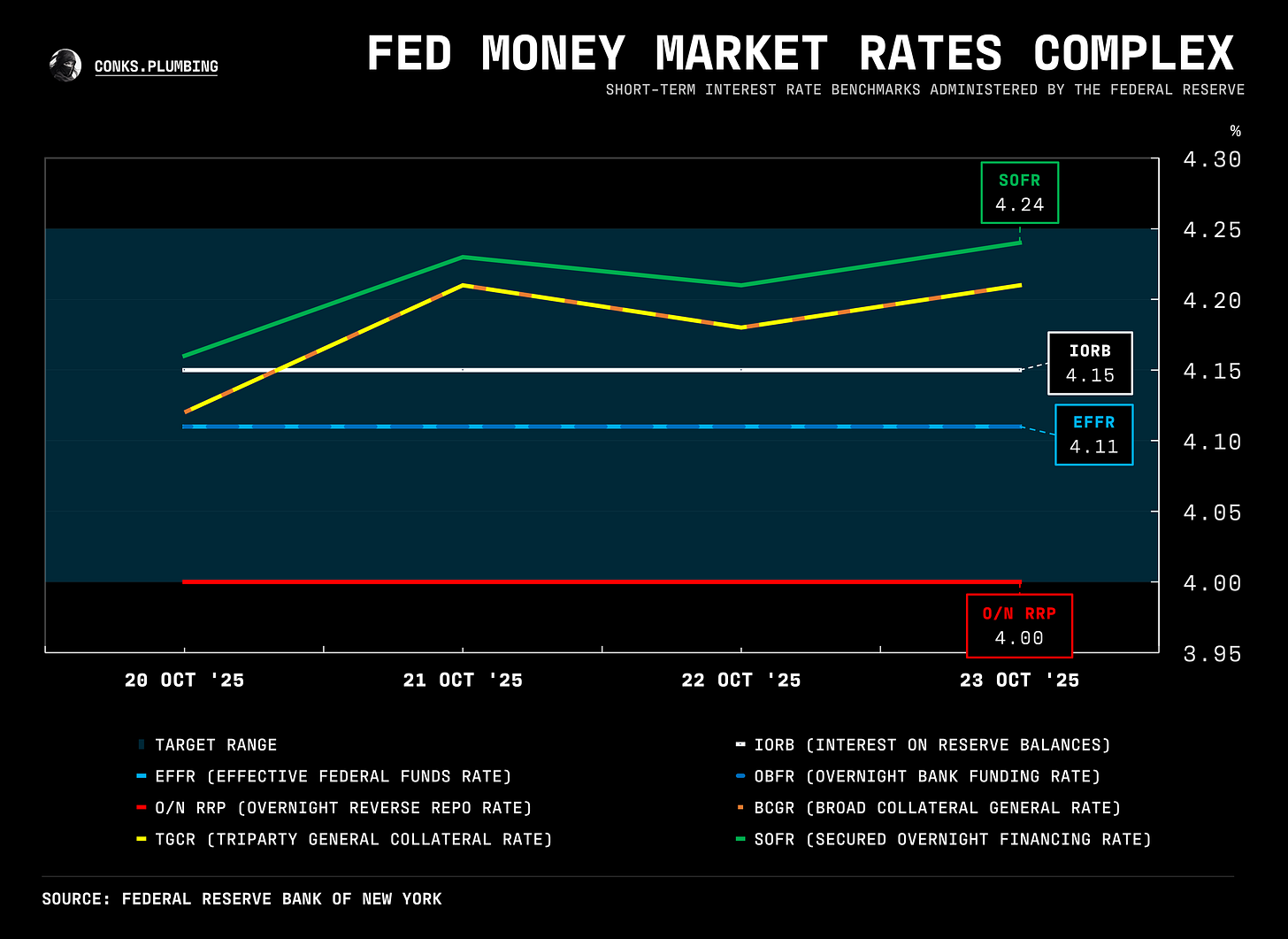
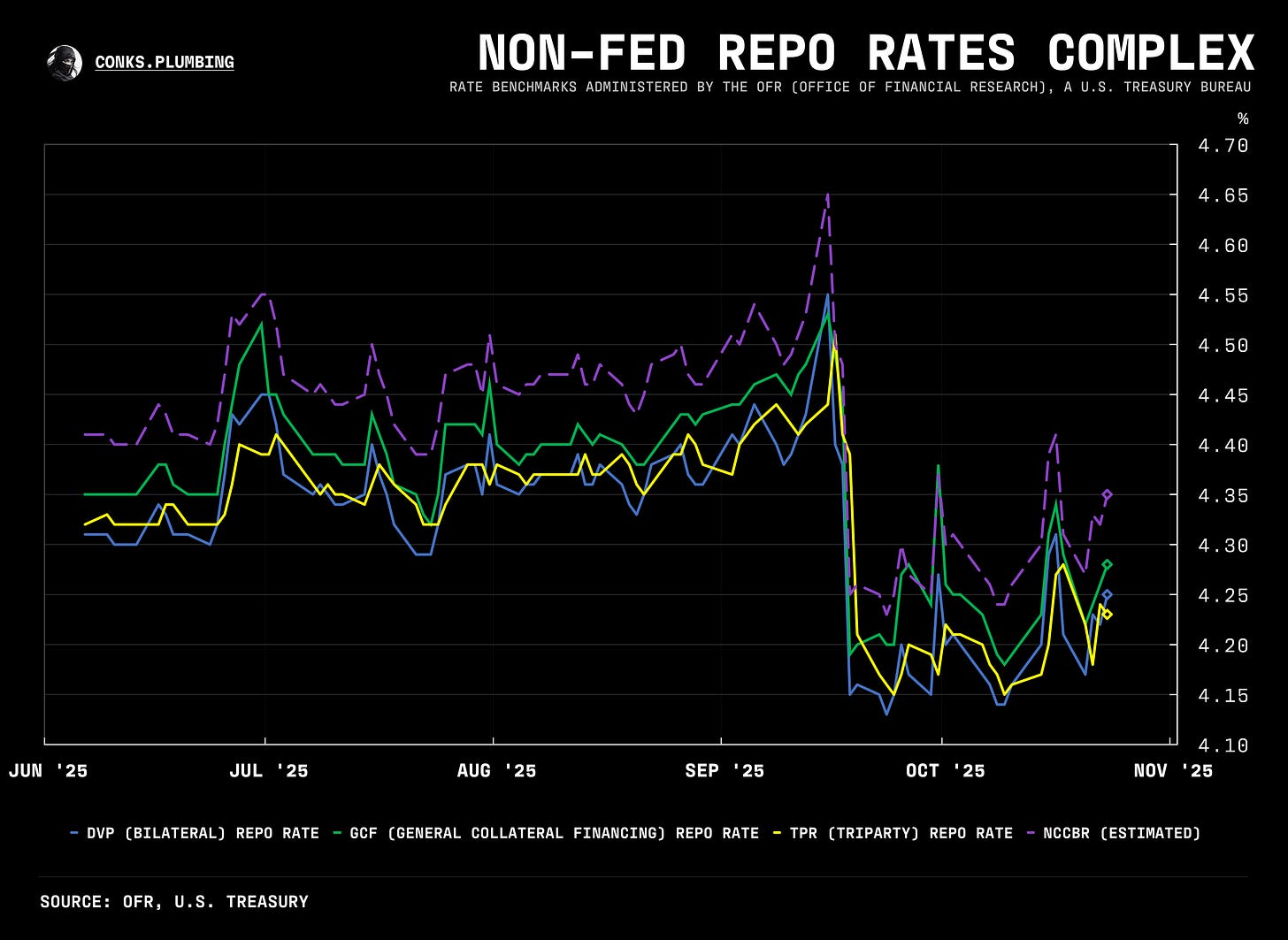


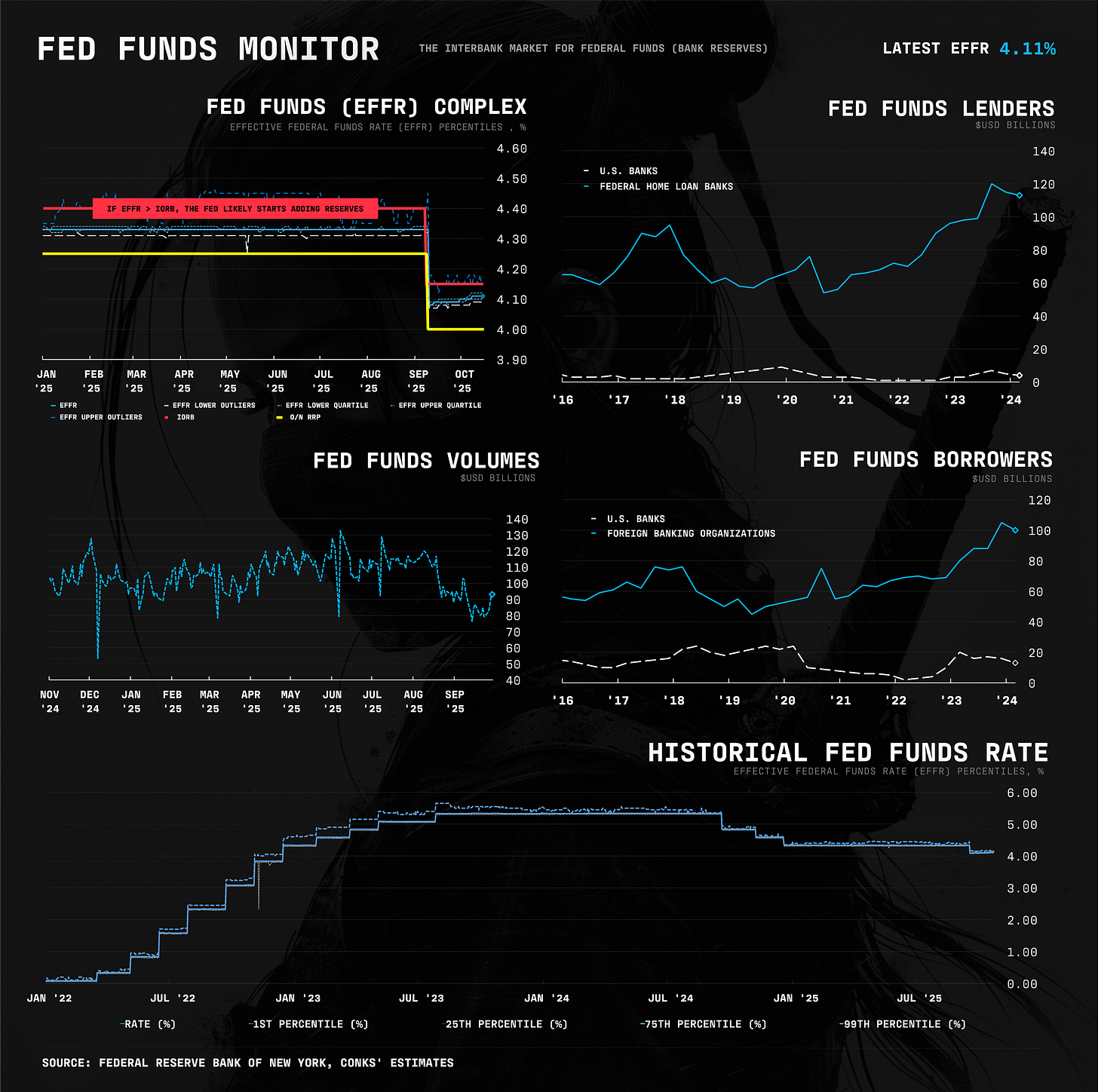

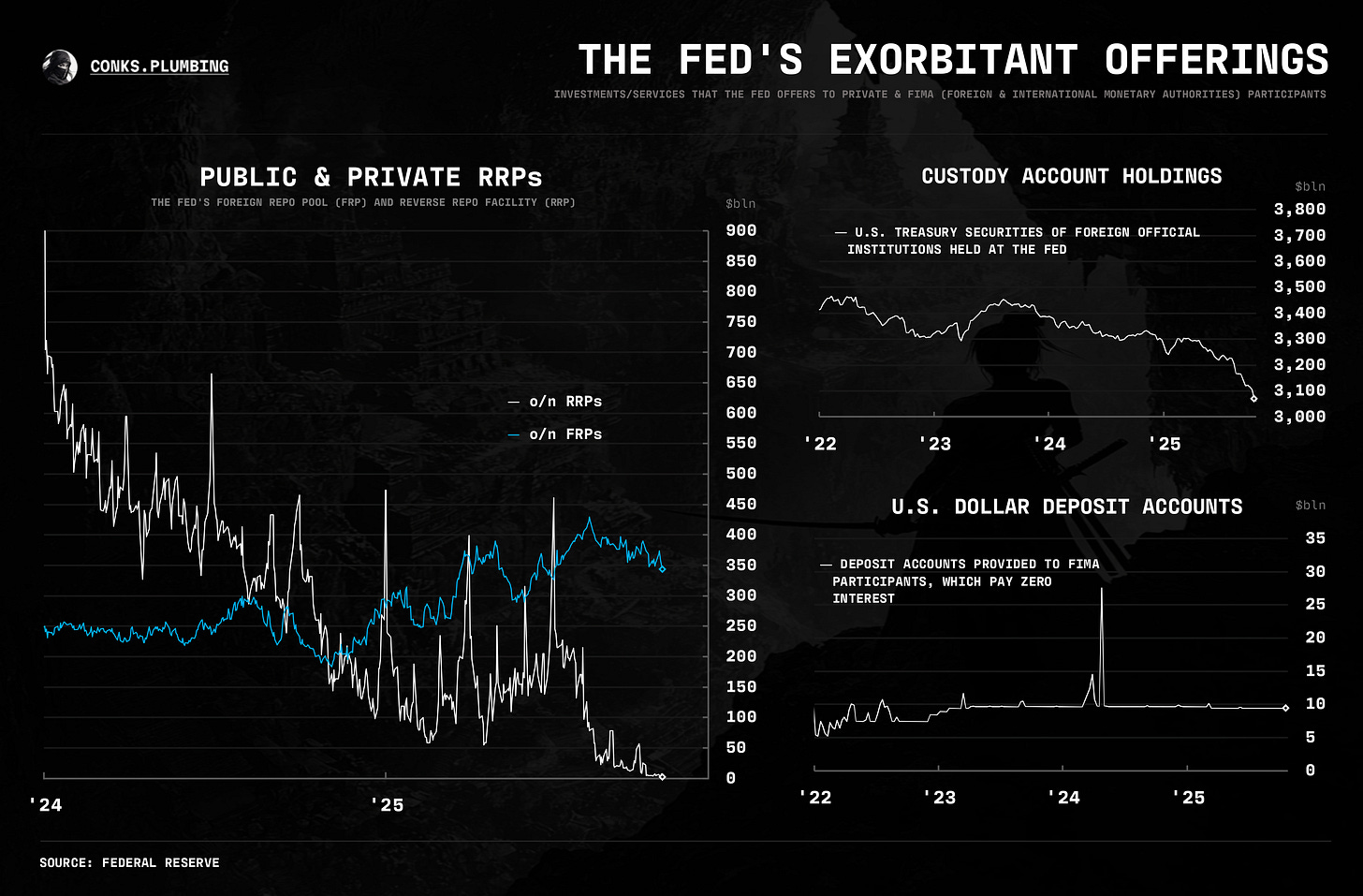





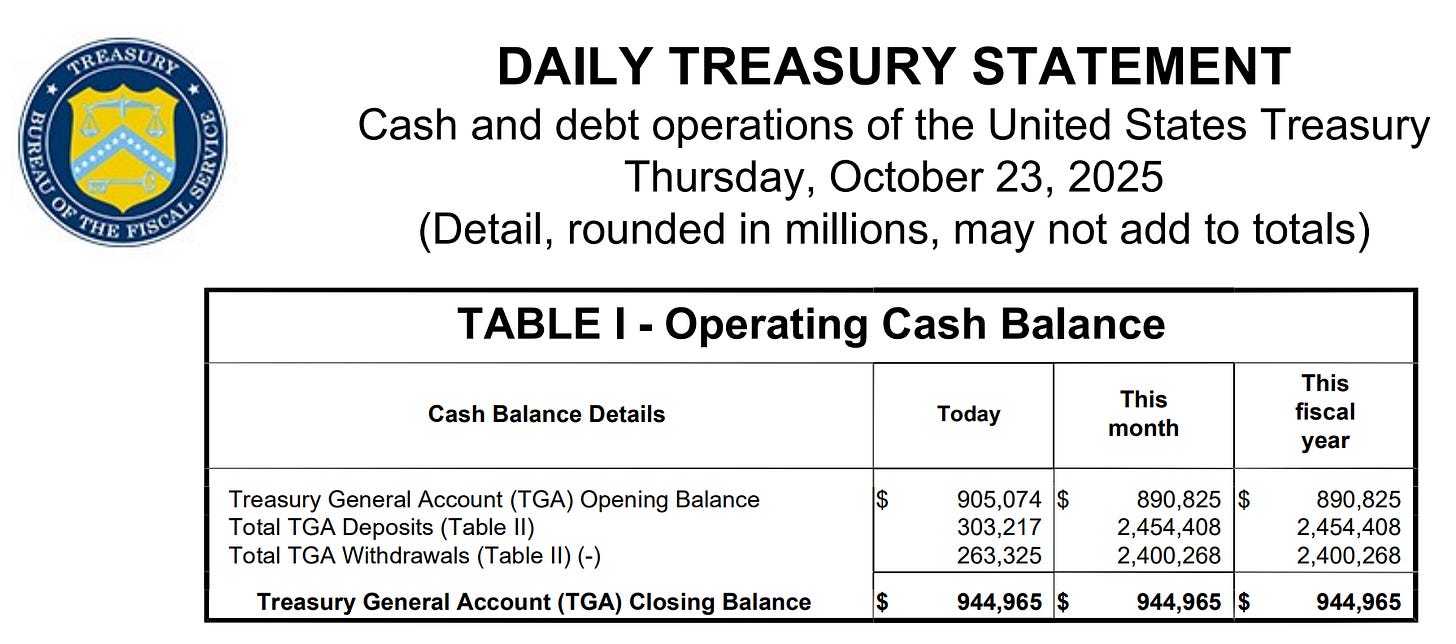

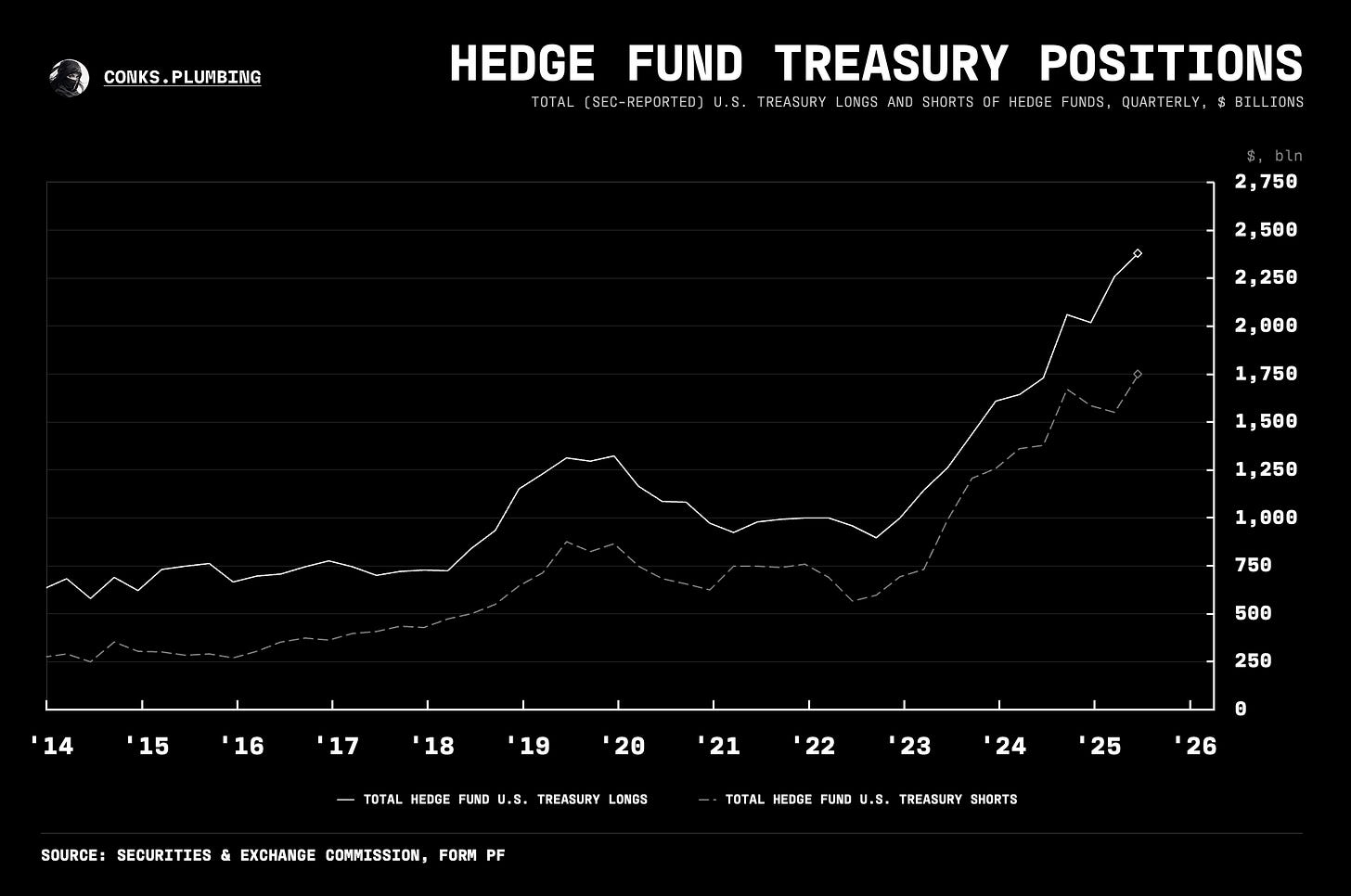




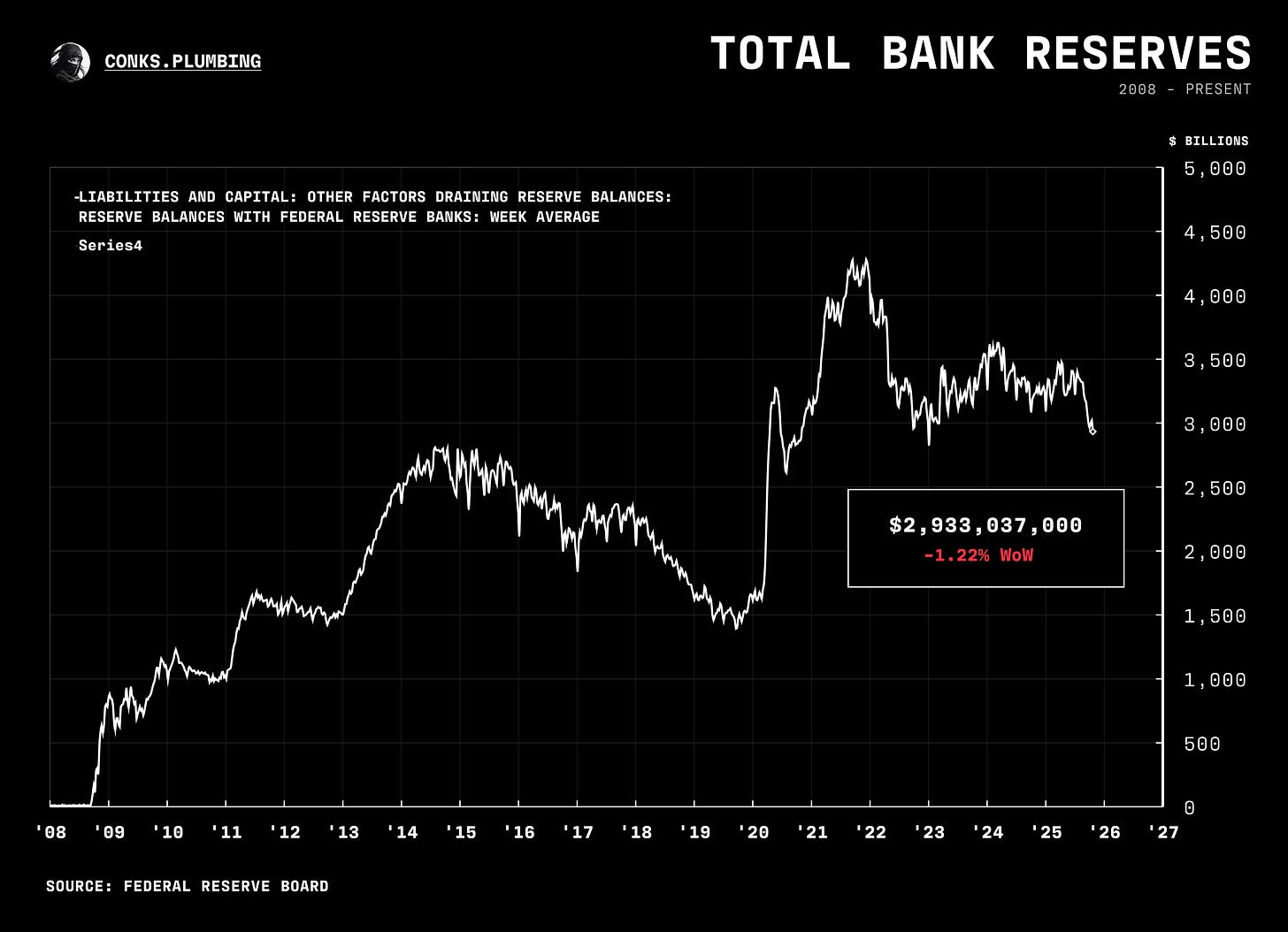
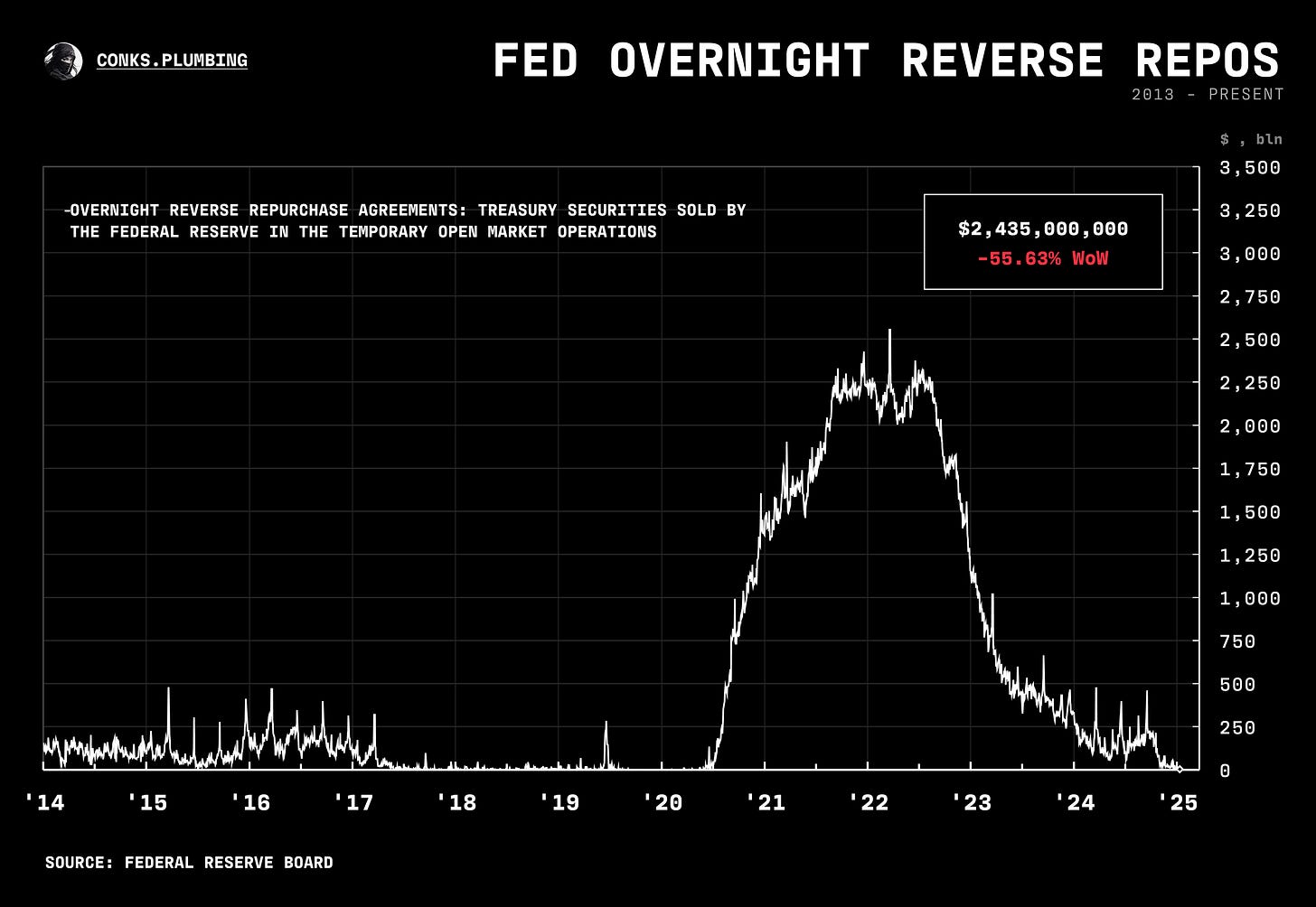


Great commentary and analysis as usual. The Fed offering Term REPO’s seems inline with Lorie Logan’s thoughts on managing rates via ceiling and Miki Bowman discussing a return to scarce reserves which Powell crushed at NABE. I think this week’s conference in Dallas will be very interesting and important.
Spreads (such as SOFR-FF) are likely to come down on any QT end-date announcement, but then, at some pace depending on the Fed’s response, will continue to widen into year-end.
Does this mean you expect the SOFR/FF basis to be less negative post QT end date announcement? But it'll still move towards a more negative basis due to year-end dynamics, albeit more contained?